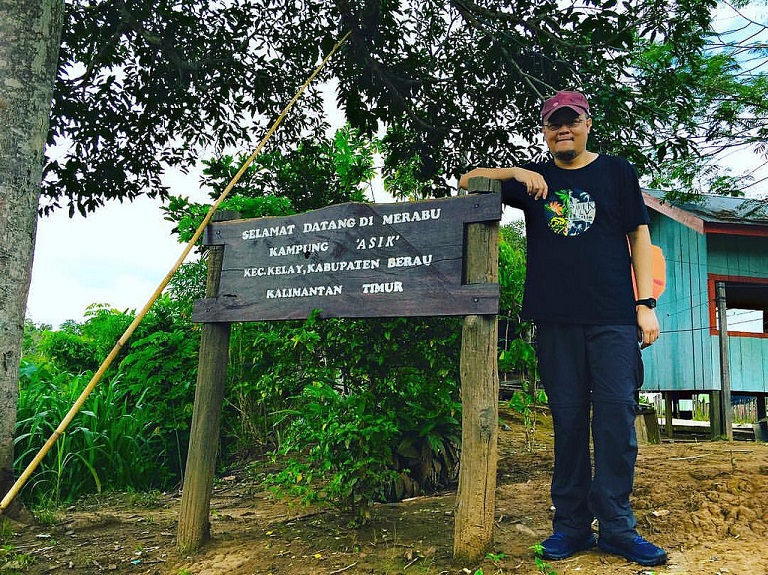- Merabu residents harvest a variety of non-timber forest products.
- “The forest is our storehouse,” one resident explains. “We have a village forest and a backup forest.”
- One observer says the village could dispose of its plastic better.
MERABU, Indonesia — The district of Berau on Borneo island is one of the world’s largest sources of coal for power generation (it gained notoriety in 2010 in the Bakrie-Rothschild coal deal). Berau is also a national leader in Indonesia’s palm oil and pulp and paper sectors.
Less famous are its manta rays, its stingless jellyfish, its karst forests and orangutans. Five hours inland from the provincial airport sits the dazzling ecovillage of Merabu.
Perched on the edge of a quarter-mile-wide, 50-meter-deep turquoise lake, Merabu is home to 200 Dayak Lebo people. The quarter-acre Lake Nyadeng drains the waters of the surrounding karst mountains. Village officials and members of the Kerima Puri community development group hope Nyadeng’s waters might be a source of income for the local economy, if they can bottle and sell it. “The water discharge rate is very high,” Kerima Puri head Asrani, who like many Indonesians goes by one name said delightedly.
Water isn’t the first non-timber forest product Merabu residents have succeeded in selling either. They already sell ecotourism packages and wild forest honey.
“Our ancestors taught us how to prepare honey so it doesn’t spoil,” explains Mayjayanti, a Merabu-based schoolteacher and one of the leaders of Kerima Puri. “You have to be careful not to touch it directly with your hands. Instead you slice the honeycomb. Then you let it drain instead of pressing it.”
“The forest is our storehouse,” Asrani explained. A storehouse filled with the needs of the people: house-building materials, rattan, fruit, medicinal plants and materials for community rituals. “ We have a village forest and a backup forest.”

According to Asrani, Merabu is the first village in Berau to get a village forest legally recognized and identified on maps by the national government. This happened in 2014. The forest spans 8,245 hectares. Merabu sits in Kelay District of Berau Regency. It has an area of 22,000 hectares.
Honey harvest happens when the forest flowers bloom. The village can gather up to 3000 liters of honey at a time. What’s gathered is sold immediately.
Then in the honey offseason, Merabu is filled with visitors. It’s a village whose abbreviated slogan is ASYIK, which is Indonesian for fun. ASYIK stands for Aman, Sehat, Indah, Kreatif – Safe, Healthy, Beautiful and Creative.
On a recent cool morning, tourists lined the village’s paths. Each had a fishing rod in hand. They are on the way to meet Marjayanti, or Mar as he is locally called, has prepared three boats to take the visiting fishermen to the mouth of the Lesan River. Whenever tourists come, Mar is busy. He doesn’t just supply them with boats. He has to deal with their accommodation too.
Marwan from the Berau REDD working group thinks that Merabu is doing exemplar work building itself up as a “climate village” that protects its surrounding forest. But “they still need to control the amount of plastic they burn,” he said. “There are local efforts to make crafts with the plastic but what is not used is just burned.”
Banner image: A Merabu resident carries a wild boar on his back. Photo by Yustinus S. Hardjanto for Mongabay.
This story is part of Mongabay-Indonesia’s ongoing series on community forestry in the country. It was first published on our Indonesian site on Aug. 10, 2016.
FEEDBACK: Use this form to send a message to the author of this post. If you want to post a public comment, you can do that at the bottom of the page.
